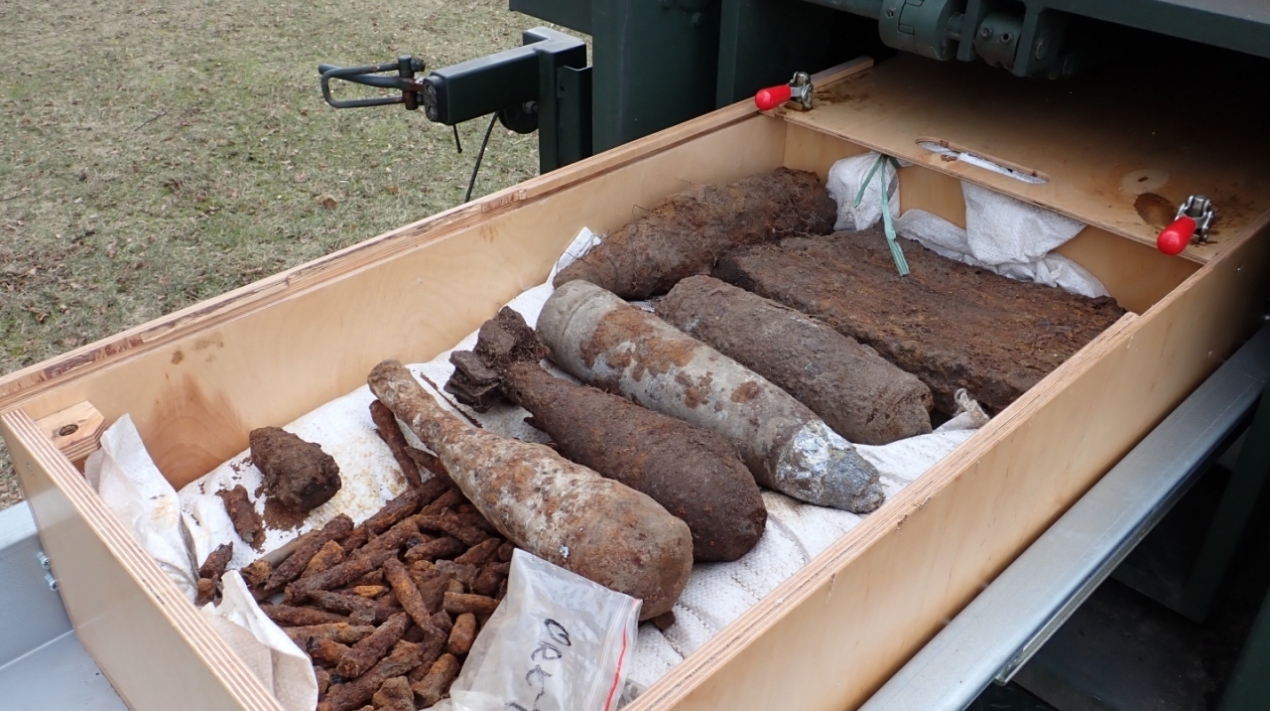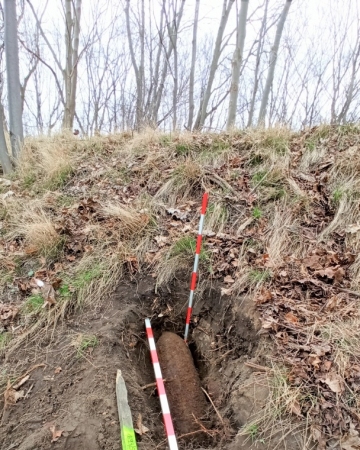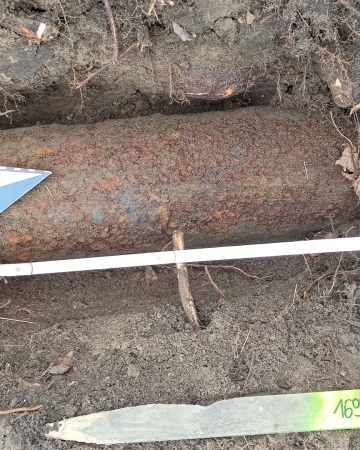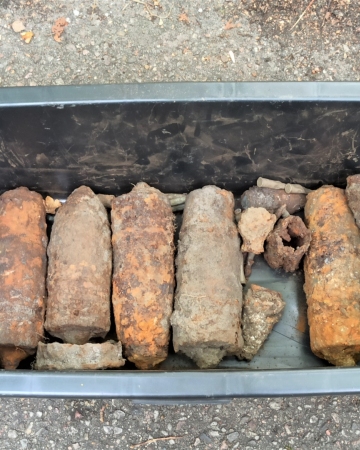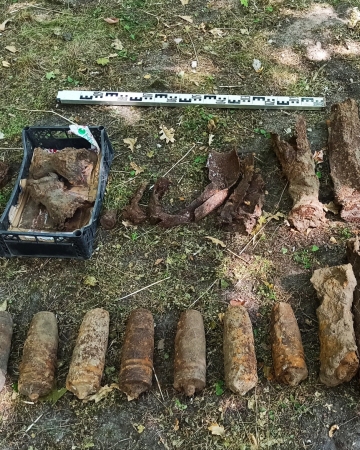OVER 4,700 DANGEROUS OBJECTS AND NEARLY 3,800 HISTORICAL ARTIFACTS FOUND DURING UNEXPLODED ORDNANCE (UXO) REMOVAL WORK AT WESTERPLATTE
The Museum of the Second World War in Gdańsk has completed the final stage of clearing Westerplatte of explosive materials and dangerous military ordnance (UXO). Since the start of the work in 2016, over 4,700 dangerous items and nearly 3,800 historical artifacts related to the history of Westerplatte from the 18th century to the post-war period have been discovered.
The cleanup operation, aimed at ensuring the safety of both museum staff and the large number of tourists visiting Westerplatte, began in 2016 and continued over the following years on plots 25/2, 68, and 3/5. To date, specialists have surveyed an area of over 13.5 hectares, resulting in the discovery of more than 4,700 dangerous items, including three aerial bombs, one of which, weighing 500 kg, was found just 30 cm below the surface. Other neutralized items included nearly 200 artillery shells (ranging from 20 mm to 210 mm), mortar and hand grenades, fuses, and components of small arms ammunition.
In addition, during concurrent searches for artifacts, almost 3,800 items related to the history of Westerplatte from the 18th century to the post-war period have been found. These include cannonballs and musket balls from conflicts during the Polish succession wars and the Napoleonic era; coins, containers, and decorative stove tiles from the resort's operational period; and numerous artifacts from the period of the Transit Warehouse's operation and defense, such as uniform and weapon components, railway infrastructure parts, and lead seals used to secure the Transit Warehouse facilities.
The final stage of the operation, conducted from March 19th to 29th, 2024, took place on parts of plots 20, 24, 26, and 27, covering a total area of 2.5 hectares, to a depth of at least 30 cm. The UXO removal was combined with artifact searches and carried out under archaeological supervision, allowing for complete documentation of the findings. During this stage, 49 dangerous items were discovered and sent for neutralization, along with over 180 historical artifacts.
The UXO removal work was carried out by soldiers from the 43rd Naval Engineers Battalion, the Engineering Company of the 2nd Engineers Regiment from Kazun Nowy, and specialists from private companies.












